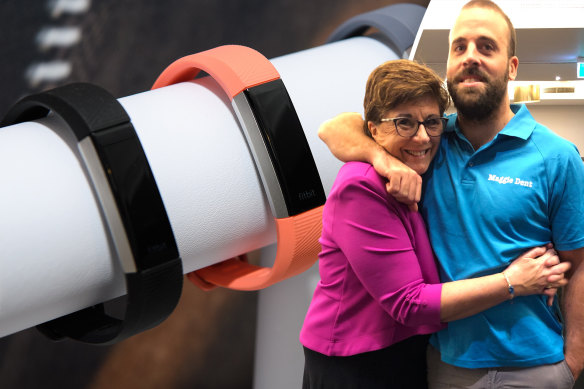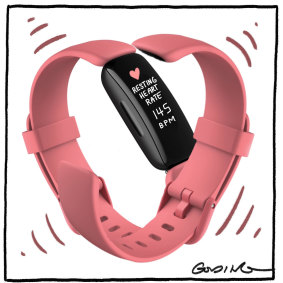It was Maggie Dent’s watch that alerted her to a heart condition which could lead to a stroke if left untreated.
The watch told Dent she had a sky-high resting heart rate of 145 beats per minute, but because she could not feel that anything was wrong she assumed her FitBit must be malfunctioning.
Dent was saved from a possible stroke, thanks to her Fitbit, and her son who pushed her to act.
However, it turned out the education expert and parenting author was experiencing a condition called atrial flutter.
“I just remember thinking, ‘well that’s ridiculous, it must be malfunctioning’,” Dent said.
“I only bought it at Christmas to monitor my heart rate, sleep and step count, I actually hate technology, but after this, I might have to rethink that.”
Dent ignored the device and went out, but several hours later her heart rate was still registering high.
“I was in denial,” she said. “I had an event that night and a lot to do that day. Women do that a lot; tell ourselves things aren’t that bad and keep pushing through.
“I didn’t want to let anyone down.”
But eventually she called her son, who just happened to be an emergency department doctor. He came over, measured her heart rate and immediately told her to get to hospital.
“Needless to say he was worried. He told me I was stubborn about things at first, and he did get quite cross, but I did listen to him,” Dent said.
A few hours later Dent was diagnosed with an atrial flutter. After a few tablets and a magnesium drip, her heart rate dropped back down.
“An ED nurse told me she constantly sees this, people coming in with no symptoms but registering something was wrong thanks to a smartwatch,” Dent said.
“She told me atrial flutters are easier to treat. Something kicks you heart rate out of whack, and you have to kick it back into gear.
“But if it’s left longer than 48 hours, it can turn into something much more serious and potentially cause strokes.”
Illustration: Matt GoldingCredit:Matt Golding
The Fitbit app showed Dent’s heart rate flipped at 12.37am while she was asleep, meaning she caught it within 12 hours.
She said the 48-hour window was a worry, especially for women who lived far from hospitals or who might have to wait a long time in a public emergency department for treatment.
Heart Foundation healthcare programs manager Natalie Raffoul said it was common for people to have no external signs their heart was in trouble.
“We are definitely seeing wearable devices pick up heart conditions more frequently, and they are a great way of empowering people to take charge of their own health,” she said.
“It is common for people with atrial flutters to feel no symptoms. Even if someone does, it is often only momentary and can go relatively unnoticed.”
Raffoul said an atrial flutter could lead to a more serious condition called atrial defibrillation if left unchecked, which could cause sometimes fatal strokes.
She said the advice was for anyone over 45, or younger if they were Aboriginal or Torres Strait Islander, to get their heart checked regularly.
“If you do have any symptoms or notice your smartwatch is giving an abnormal reading, the advice is to book in with your GP straight away. If you start to feel any acute symptoms, like nausea or vomiting, go straight to emergency,” she said.
The Morning Edition newsletter is our guide to the day’s most important and interesting stories, analysis and insights. Sign up here.
Most Viewed in National
From our partners
Source: Read Full Article









